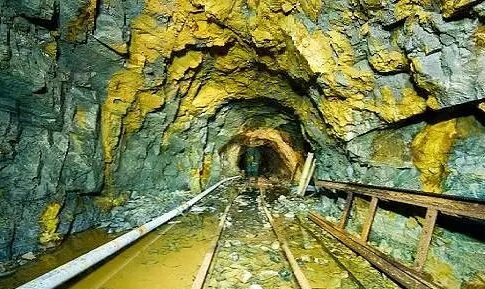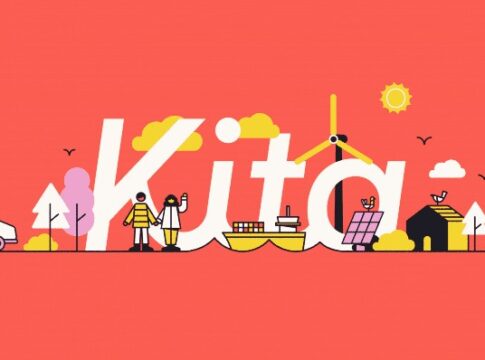Global Mining Expanding Capex and Commiting to Net Zero
The mining industry is emblematic of economic cycles, surging during booms and contracting in busts. According to data from S&P Global in 2023, the capital expenditure (capex) of the world’s 30 leading mining companies is predicted to grow by 6.2%, summing up to an impressive $109.2 billion. This uptick trails the hikes of 13.8% and 16.3% in 2021 and 2022 respectively.
However, it’s important to note that this projection is still significantly below the 2013 peak of $145.7 billion.
Why is this relevant? It illustrates that these giants of industry may yet have considerable runway before reaching their zenith of expansion endeavors.
As the years advance, miners will grapple with mounting inflation, rising interest rates, and decelerating economic activities. This challenging financial landscape might lead to a slight dip in capex, by 1.8% in 2024 and a further 0.7% in 2025.
Global Miners’ Capex and Net Zero Targets
Several pivotal players dominate the scene, including the following mining giants. Each of the miners set their own net zero targets, with increasing commitment to sustainable mining.
BHP Group Ltd.
Earmarking $7.6 billion for 2023, the miner particularly focuses on its Jansen mine in Canada. BHP’s long-term strategy integrates operational decarbonization, allocating a sizable budget of $4 billion towards this cause by 2030.
Just like ArcelorMittal, BHP also doesn’t include Scope 3 emissions in its 30% reduction target by 2030 versus 2020 levels. It only covers operational emissions or Scope 1 and 2, including methane emission reductions. BHP aims to achieve net zero emissions by 2050.
Rio Tinto Group
With a capex guidance of $7.4 billion in 2023, Rio Tinto aims to enhance its projects like the Simandou iron ore deposit in Guinea and the Salar del Rincon lithium project in Argentina. Their longer-term vision is growth-centric, targeting a hefty investment of up to $10 billion for 2024 and 2025.
The mining company aimed for net zero emissions by 2050, in alignment with the Paris Agreement. To achieve this goal, the company sets a 15% reduction in direct and indirect emissions by 2025, and 50% by 2030, based on the 2018 levels.
Vale SA
Vale plans to allocate around $6 billion in 2023, distributing funds across a variety of projects, including the Onca Puma mine’s furnace and the ramp-up of the Serra Sul operation.
The mining firm aims to achieve net zero emissions by 2050, while seeking to slash scope 1 and 2 emissions by 33% by 2030. It also plans to reduce scope net emissions by 15% by 2035. Last year, the miner emitted a total of over 486 million tonnes of CO2e, 98% of which accounted for Scope 3 emissions.
Anglo American PLC
The mining giant adjusts its 2023 capex vision to $6.0 billion, with an emphasis on projects like the Woodsmith polyhalite venture in the UK and the ramp-up related to the Quellaveco copper mine in Peru.
Anglo American aims to reduce net GHGs emissions by 30% against the 2016 baseline by 2030. The miner also has set a lofty goal of becoming carbon neutral, for Scope 1 and 2, across operations by 2040. This climate goal also entails slashing Scope 3 emissions by 50% by the same period.
Glencore PLC
Glencore projects an investment of approximately $4.8 billion in 2023, channeling funds towards diverse projects like the Collahuasi copper joint venture in Chile and the Zhairem zinc project in Kazakhstan.
In the short term, Glencore plans to reduce emissions across all three scopes by 15% by 2026 and 50% by 2035 against its 2019 base year. In the long-term, the mining major aims to reach net zero emissions by 2050 same as most of the others.
Posco Holdings Inc.
This giant miner demonstrates a commitment to sustainability, emphasizing eco-friendly ventures. With a projected capex of approximately $4.8 billion in 2023, Posco’s goals include magnifying its production of cathode, anode, and lithium materials by 2030.
Same with Vale, Posco also committed to reach carbon neutrality or net zero by 2050. Its net zero roadmap says it will cut emissions gradually – 10% by 2030, 50% by 2040, and net zero by 2050. The baseline level is total emissions from 2017-2019. Alongside carbon abatement efforts, the mining firm also set a goal to achieve avoided emissions by 10% by 2030.
ArcelorMittal SA
ArcelorMittal commits between $4.5 billion and $5 billion to capex. Using various levers, ArcelorMittal seeks to achieve a 25% reduction in CO2 emissions by 2030. That includes Scopes 1 and 2 only, excluding Scope 3 emissions.
Plus, the miner is aiming to be the world’s first full-scale zero carbon emissions steel plant in Sestao by 2025, and reach net zero by 2050, too.
CAPEX data from S&P Global
Profit and Planet in One Mine
The cumulative capex of the top ten mining conglomerates is forecasted to comprise a substantial 50.8% of the overall capex of the top 30 miners in 2023. While projections reveal robust financial performance in 2023, there’s an underlying quandary these titans face.
As global demands evolve, the mainstay for miners will pivot towards critical metals, transition to clean energy, and operational decarbonization. The question remains: can these behemoths navigate these treacherous waters successfully, balancing both profit and planet?
As the mining industry accelerates its capital investments, the terrain becomes increasingly multifaceted. As they dig deep, these global giants must strike a harmonious balance, ensuring sustainable growth, adapting to an ever-evolving market, and fostering a commitment to a greener planet. Only time will reveal if these mountains of industry can unearth a golden future.
The post Global Mining Expanding Capex and Commiting to Net Zero appeared first on Carbon Credits.



